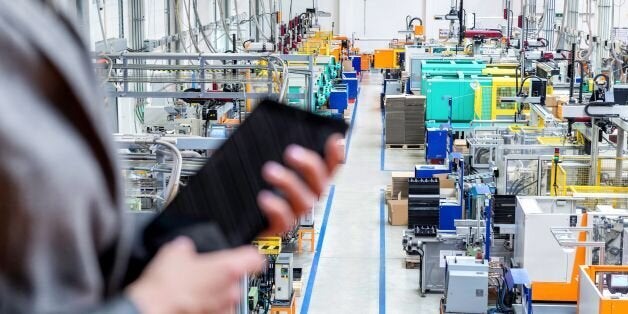
We’ve been told that the Internet of Things (IOT) is the future of technology, but what does that really mean? Imagine refrigerators that write grocery store lists and Jetsons-style microwaves that cook the most delicious food with little preparation. While these are pie-in-the-sky ideas, practically speaking, the IOT (also known as Industry 4.0) is a revolutionary way for manufacturers to digitize operations and save money.
The Internet of Things, a term coined by British entrepreneur Kevin Ashton in 1999, describes the ability of everyday objects to talk to each other via an Internet connection. This includes everything from your home appliances to factory machinery. The ability for a company’s network to receive, analyze and send information offers manufacturers an opportunity to be agile, increase production quality, create supply chain efficiencies and earn higher profits. Companies like Cisco and Rockwell Automation are working to create these integrated systems, but how do they actually help manufacturers?
Most manufacturing operations rely on demand and sales to drive production, inventory and manage their supply chain. But the time between production and sales results can lead to disruptions in the supply chain. Market tastes can change and without immediate visibility into their operations and the flexibility to adjust production, manufacturers can miss the opportunity to meet market demand.
So we’ve established that connectivity can definitely help. Now let’s look at how manufacturers can leverage the IOT on the plant floor.
Leveraging big data in production
One advantage of the IOT for manufacturers is the data produced by connected devices along the plant floor. With that information, manufacturers can track parts and materials, monitor equipment, regulate production and troubleshoot problems in real-time. They receive sales data and usage data immediately and relay that to the production line, where inventory levels can be assessed and new parts ordered as required. This transparency and immediacy allows manufacturers to reduce unplanned downtime, increase Overall Equipment Effectiveness (OEE) and reduce risk. It’s what Cisco calls the Connected Factory.
Energy and efficiency
When machines are connected to the Internet, manufacturers can do more than monitor output and performance. Production lines can be scheduled to scale with time-of-use electricity rates, reducing the overall cost of operations. And by leveraging sales and usage data, manufacturers can focus on producing products that satisfy customer demand. This means unnecessary goods can be phased out or produced on a smaller scale. This leads to cost savings and greater inventory efficiency, as in-demand products are immediately shipped, reducing storage time and associated costs.
Cost savings
Unplanned production downtime due to machine failure or repair can cost manufacturers millions of dollars. A manufacturer has a better chance of survival if operations leaders know when a machine needs maintenance and can schedule repairs during a planned downtime, before it disrupts production. The IOT makes predictive maintenance possible, improving a manufacturer’s bottom line and production efficiency.
Daimler Trucks is leveraging the IOT in their production facility in Oregon. An intelligent network tracks material levels accurately against orders and supply chain fulfillment – which means materials aren’t being bought and stocked. There’s no unnecessary warehousing or downtime. And when there’s a machine breakdown, video technology provides access to remote expert support on demand.
Companies that embrace connectivity and digital solutions will be the ones that will gain a competitive advantage. It’s not only a smart decision, it’s a necessary one. Learn more about how Cisco’s Connected Factory is transforming manufacturing.